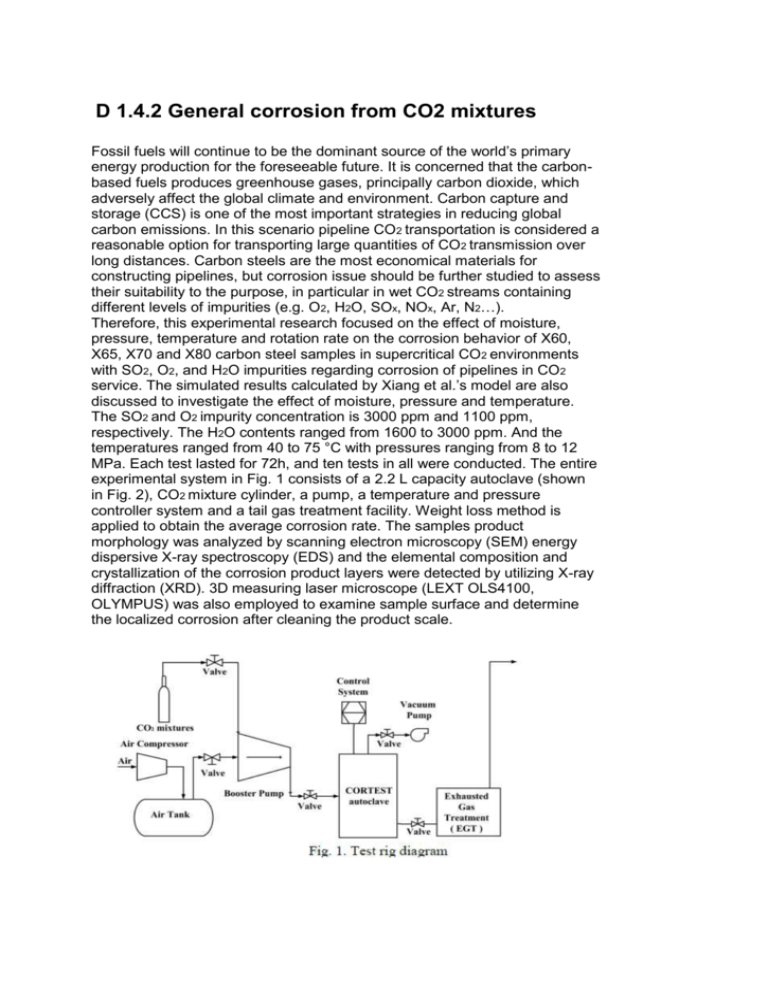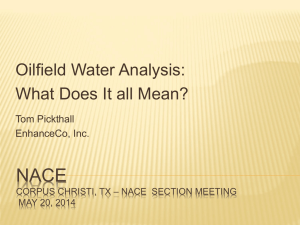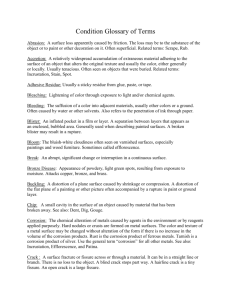D1.4.2 General corrosion from CO 2 mixtures
advertisement

D 1.4.2 General corrosion from CO2 mixtures Fossil fuels will continue to be the dominant source of the world’s primary energy production for the foreseeable future. It is concerned that the carbonbased fuels produces greenhouse gases, principally carbon dioxide, which adversely affect the global climate and environment. Carbon capture and storage (CCS) is one of the most important strategies in reducing global carbon emissions. In this scenario pipeline CO2 transportation is considered a reasonable option for transporting large quantities of CO2 transmission over long distances. Carbon steels are the most economical materials for constructing pipelines, but corrosion issue should be further studied to assess their suitability to the purpose, in particular in wet CO2 streams containing different levels of impurities (e.g. O2, H2O, SOx, NOx, Ar, N2…). Therefore, this experimental research focused on the effect of moisture, pressure, temperature and rotation rate on the corrosion behavior of X60, X65, X70 and X80 carbon steel samples in supercritical CO2 environments with SO2, O2, and H2O impurities regarding corrosion of pipelines in CO2 service. The simulated results calculated by Xiang et al.’s model are also discussed to investigate the effect of moisture, pressure and temperature. The SO2 and O2 impurity concentration is 3000 ppm and 1100 ppm, respectively. The H2O contents ranged from 1600 to 3000 ppm. And the temperatures ranged from 40 to 75 °C with pressures ranging from 8 to 12 MPa. Each test lasted for 72h, and ten tests in all were conducted. The entire experimental system in Fig. 1 consists of a 2.2 L capacity autoclave (shown in Fig. 2), CO2 mixture cylinder, a pump, a temperature and pressure controller system and a tail gas treatment facility. Weight loss method is applied to obtain the average corrosion rate. The samples product morphology was analyzed by scanning electron microscopy (SEM) energy dispersive X-ray spectroscopy (EDS) and the elemental composition and crystallization of the corrosion product layers were detected by utilizing X-ray diffraction (XRD). 3D measuring laser microscope (LEXT OLS4100, OLYMPUS) was also employed to examine sample surface and determine the localized corrosion after cleaning the product scale.











